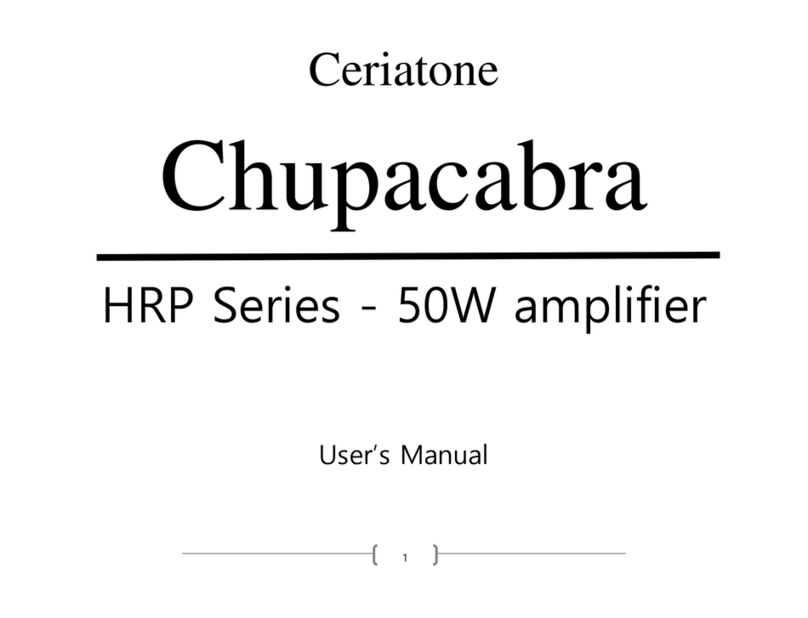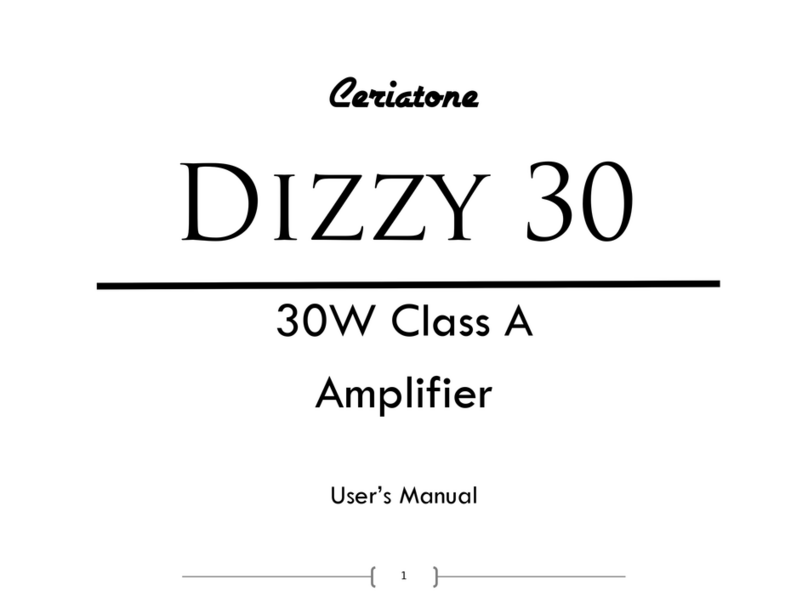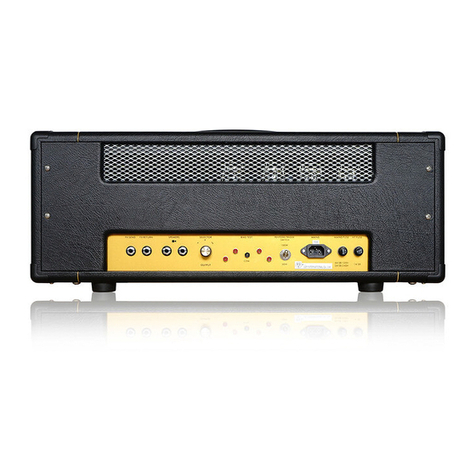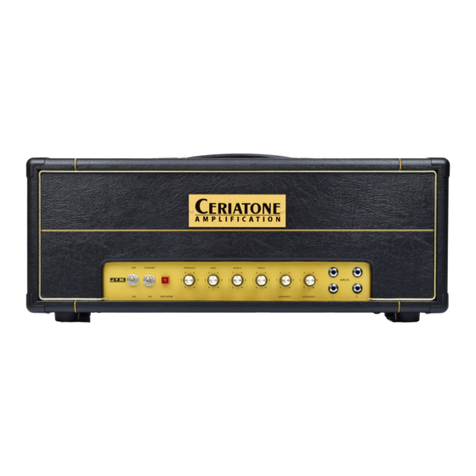
The Ceriatone AH Deluxe model is a 3 channel amp that will provide you with tones ranging
from pristine, and rich cleans, to classic rock crunch, and to the heaviest of metals.
Each channel has multiple voicing options to enable wide variety of tonal palette to the user.
As with other Ceriatone amplifiers, the AH Deluxe is wired point to point on turret boards (not
PCB), with the best components that are industry standards. We invite you to view the gutshots
of our amps on the Ceriatone website, to witness the best and cleanest wiring that Ceriatone is
known for.
The amp takes pedals well, and on top of that, a series buffered solid state loop (bypassable, and
with Return Level Control) is also built in, to give the best performance in effects loops.
For your recording, and other advanced needs, a Line Out with Level control is also included.
The Clean Channel comes with Volume, Treble, Middle, and Bass controls, as well as a 3 way
bright switch.
The overdrive consists of 2 modes, the OD and HOD. Each of these channels have its own Gain
and Master conrols, thus enabling you to set your sounds exactly as you need, and easily switch
from one to another, without volume jumps, and other inconveniences.
The OD and HOD channels share the same EQ controls, namely Treble, Middle, and Bass.
For versatility, there are various switches and controls that enable further tone shaping, as can be
seen in the description of features, in the next page.
Caution:
Tube amplifiers have high voltages inside, which can be lethal. Safety precautions in handling
such equipment should be adhered to at all times.
Repair and Servicing should be conducted by a qualified technician. Do not open it up, if you are
not qualified.
The amplifier must be operated with the proper mains voltage, using a proper polarized/grounded
power cord.
Do not expose the amp to water/moisture, or excessive heat.
Vacuum tubes are wearable items, and need replacing from time to time. It is wise to send the
amplifier for periodical general checkups, as a preventive maintenance measure, and to ensure
optimal tonal performance.
































